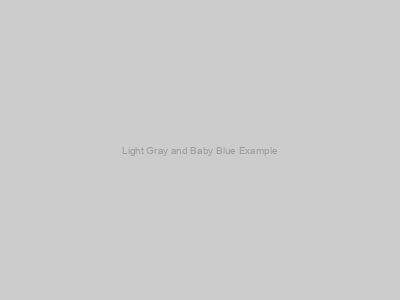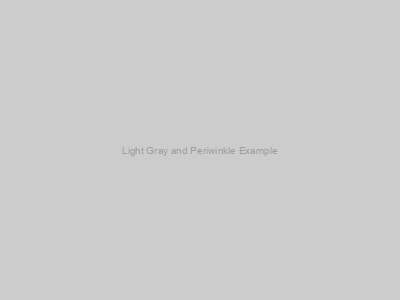Choosing complementary colors for your home’s interior can be challenging. When decorating with cool, neutral shades like light gray, it’s important to balance it with a vibrant accent color that works well with the gray without clashing. One of the most popular accent colors with light gray is blue – but with so many shades of blue to choose from, how do you pick the right one?
In this article, we’ll explore what shade of blue best complements a light gray color scheme. We’ll look at color theory and psychology to understand why some shades go better together than others. We’ll also provide visual examples of light gray and blue color combos, as well as specific shade recommendations for paint, textiles, and accessories.
Read on for tips and ideas to effortlessly incorporate the perfect blue hue into your light gray home decor.
The Color Wheel and Complementary Colors
First, it helps to understand some basic color theory. The color wheel is a useful tool for selecting color schemes. It arranges colors into a circle to show how they relate to one another. Colors that are opposite each other on the wheel are considered complementary colors.
When placed side-by-side, complementary colors create a strong visual contrast, making each color appear more vibrant. This contrast is pleasing to the eye. Some classic complementary pairs include red and green, purple and yellow, and blue and orange.
| Complementary Color Pair | Properties |
|---|---|
| Red and Green | Create a bright, exciting contrast |
| Purple and Yellow | Bold, playful combination |
| Blue and Orange | Energetic and summery |
When it comes to light gray, the complementary color on the wheel is a light blue. However, any shade of blue can work well with gray to provide visual interest. The exact shade depends on the look and feel you want to achieve.
Cool Tones vs. Warm Tones
Another important concept in color theory is cool tones versus warm tones. Generally speaking:
– Cool colors include blues, greens, and purples. They evoke feelings of calmness and tranquility.
– Warm colors include reds, oranges, yellows, and browns. They evoke feelings of energy, excitement, and warmth.
Light gray is considered a cool neutral. Pairing it with a warm accent color creates a nice balance. However, you can also use shades of blue that lean cool or warm.
A warm blue, like a sky blue, contrasts nicely with the cool grays. But a cool navy blue can also complement light gray in a more sleek, sophisticated way.
When selecting a blue for light gray, keep in mind the overall mood you want to achieve. Do you want an uplifting, casual feel or something more elegant? Let that guide your shade selection.
Blue Undertones
When browsing blue paint swatches and fabrics, you’ll notice differences in undertone. Some blues take on a purple, green, or gray cast. Understanding undertones can help you find a blue that meshes seamlessly with your light gray palette. Here are some guidelines:
Blues with purple undertones: These rich, jewel-tone blues pair beautifully with light gray. Try an indigo, sapphire, or periwinkle blue. These feel bright and regal.
Blues with green undertones: These tranquil blues work well in informal, cottage-style rooms. A seafoam or aqua blue conveys a relaxing vibe. Mint blue is also lovely with light gray.
Blues with gray undertones: For a monochromatic look, choose a blue-gray with a similar undertone as your light gray paint or fabrics. This provides subtle contrast while keeping the palette soothing.
As you evaluate different shades of blue, pay attention to the nuances. Look for a blue that shares common tones with your specific shade of light gray. This helps the colors harmonize.
Recommended Shades of Blue for Light Gray Color Schemes
Now that we’ve covered the basics, let’s look at some specific shades of blue that coordinate seamlessly with light gray:
Baby Blue: This pastel blue with a touch of green is one of the most popular pairings. Its soft, dreamy quality balances nicely with light gray. Use it in a nursery or bedroom for a peaceful ambiance.
Light Blue: For a minimalist, airy look, light blue is a foolproof match for light gray. Whether you opt for a powder blue or sky blue, it won’t overpower the gray.
Navy Blue: For a nautical vibe, navy blue adds a bold accent to light gray. Its deep hue contrast nicely with the lighter, muted gray. Use navy blue in decor touches like pillows, rugs, or an accent wall.
Duck Egg Blue: This pale turquoise blue has gray undertones that integrate seamlessly with light gray. Its retro vibe works in vintage-inspired or farmhouse spaces.
Periwinkle Blue: With subtle purple undertones, periwinkle blue pairs beautifully with light gray. Its whimsical quality is perfect for shabby chic decor. Use it in small doses as an accent.
Using Multiple Shades of Blue
One trendy approach is to incorporate a mix of blue shades in varying tones and intensities. This adds visual depth and interest. Try using a deep navy on large pieces like a sofa or accent chair, a soft powder blue on the walls, and pops of cornflower blue in pillows and artwork. The gray acts as a subtle neutral backdrop that ties it all together.
If you have a large space, vary the blues in each zone – a light sky blue in the living area, slate blue in the dining space, and peacock blue in the bedroom. This technique creates a dynamic, multifaceted color scheme.
Tips for Combining Light Gray and Blue
To successfully decorate with light gray and blue, keep these tips in mind:
– Use the 60-30-10 rule for balancing colors: 60% light gray, 30% blue accent, 10% other accent color.
– Choose gray and blue paint colors from the same brand for optimal coordination.
– Introduce blue through decorative items like pillows, throws, vases and artwork before committing to larger pieces.
– Use multiple shades of blue in different intensities throughout the space for interest.
– Add warmth with wood furniture and accessories to balance the cool color scheme.
– Incorporate white and natural textures like rattan or jute to keep the space from feeling too heavy.
Using Blue Accessories
The easiest way to incorporate blue into a light gray room is with accessories and decor items. Some ideas include:
– Throw pillows or blankets in shades of blue
– A jute or sisal area rug with blue accents
– Ceramic vases or glass bowls in light blue hues
– Candles or other decorative objects in cobalt blue
– Artwork featuring different blue tones
– Flower arrangements with blue hydrangeas or delphiniums
– Patterned sheer curtains in blue
– A table runner, placemats or napkins in navy blue and white
Mix and match different shades of blue to add pops of color throughout the neutral gray space. The accessories can easily be changed out for seasonal updates.
Examples of Light Gray and Blue
To get a better visual idea of how light gray and various shades of blue work together, here are some inspiring room examples:
Light Gray and Baby Blue: The soft baby blue accent wall and pillows pop against the light gray backdrop in this tranquil bedroom:

Light Gray and Navy: This living room uses navy blue in the tufted sofa and decorative pillows to create contrast:

Light Gray and Periwinkle: The periwinkle blue chandelier and wall art provide whimsical pops of color in this predominantly light gray dining room:

Light Gray and Aqua: The accent chair and decorative items in airy aqua blue complement the light gray walls in this bedroom:

Conclusion
Light gray and blue are an undeniably beautiful color combination. When selecting the perfect shade of blue, keep in mind the mood you want to convey, as well as the color undertones that will coordinate well with your specific gray. Cool tones like soft powder blues and blue-grays are foolproof pairings, but experiment with shades like periwinkle, navy, or aqua for extra vibrancy. Incorporate the blue in paint, accent furniture, decorative objects, textiles and artwork. Vary intensities and hues for a layered, serene color scheme that’s easy on the eyes. With the right shade of blue, you can effortlessly add life to a light gray space.


